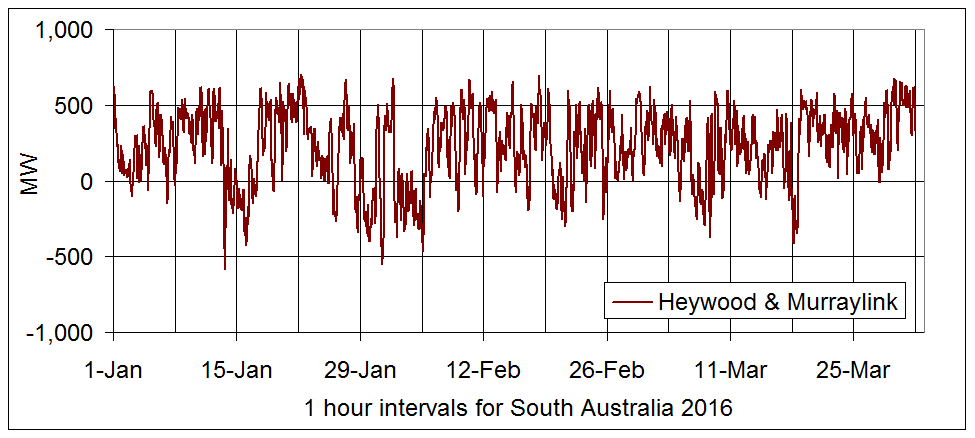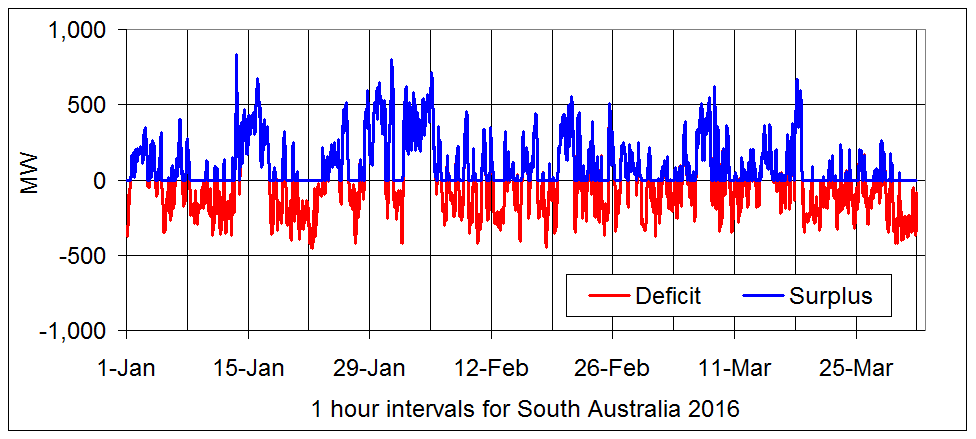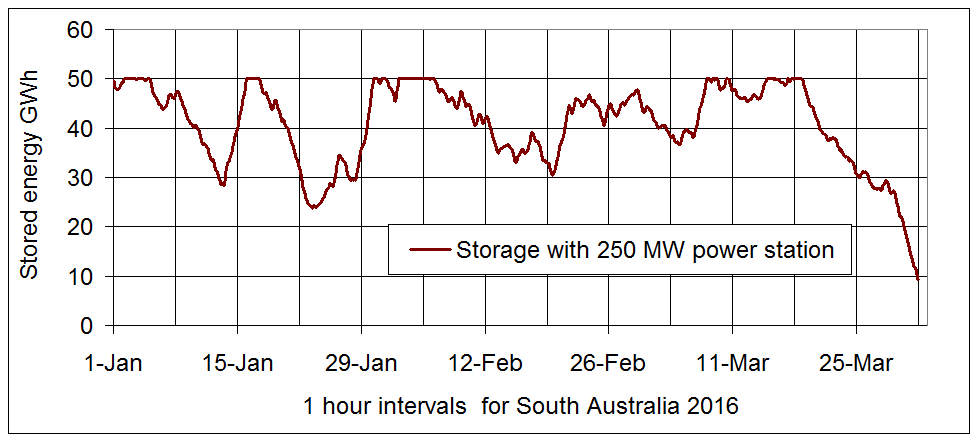The government of South Australia has announced a program for insulating South Australia from the uncertainty of the electricity links to Victoria. The plan involves the construction of a 250 MW gas fueled generator for $360 million and the purchase of some $100 million of battery storage. In addition a further 250 MW power station is needed and industry would be encouraged to build it.
The basic assumption presumably, is that both the Heywood and Murraylink interconnectors are no longer operating. It certainly was the case during the recent spate of blackouts in South Australia, when the Heywood interconnector tripped on overload supplying South Australia in the statewide blackout of 28 September 2016 The loss of these interconnectors at any time remains a plausible scenario. The importance of these links is shown in Figure 1 for the period January 1 to March 31 2016. This 3-month period was chosen as being typical of the period where the likely summertime peak in demand would occur. Here Victoria supplies an average 232 MW each day with extremes of 705 MW flowing to and 583 MW from South Australia.

Advertisement
Figure 1:Victorian interconnector supply in 1 hour intervals from two interconnectors, Heywood (600 MW) and Murraylink (200 MW) for 1 January to 31 March 2016. At times an oversupply from wind farms is sent into the Victorian electricity market as shown by the negative-going excursions above.
The South Australian plan is to add a 250 MW power station. This does not remove the great variability in supply but it would provide surplus energy for storage. These surpluses and deficits are shown in Figure 2 for the period January to March assuming that the power station operates continuously at full capacity.

Figure 2:Variations of surplus and deficit from a 250 MW power station operating continuously to meet the demand formerly supplied by the interconnectors for January to March 2016
The South Australian plan calls for battery storage so with one 250 MW power station it is possible to estimate the storage needed from the surplus energy and the discharges necessary to meet demand.
The battery storage behaviour is shown in Figure 3 for the period January to March. It is clear that 50 GWh of storage is necessary. The cost would be some $10 billion at $0.20 per Wh.
Advertisement

Figure 3:Battery storage behaviour to match demand with a 250 MW power station.
This storage cost is not a match for the $100 million storage cost in the South Australian plan and explains why there is a need for another new power station so that the storage cost can be greatly reduced.
Discuss in our Forums
See what other readers are saying about this article!
Click here to read & post comments.
20 posts so far.
About the Authors
Tom Quirk is a director of Sementis Limited a privately
owned biotechnology company. He has been Chairman of the Victorian Rail Track
Corporation, Deputy Chairman of Victorian Energy Networks and Peptech Limited
as well as a director of Biota Holdings Limited He worked in CRA Ltd setting up
new businesses and also for James D. Wolfensohn in a New York based venture
capital fund. He spent 15 years as an experimental research physicist,
university lecturer and Oxford don.
Paul Miskelly is an electrical engineer who worked for ANSTO for 32 years.